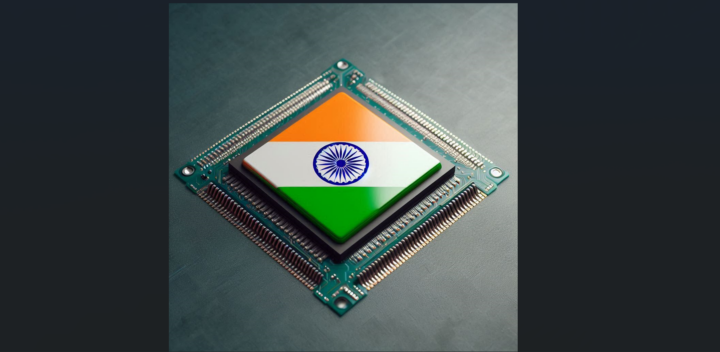Neil deGrasse Tyson believes that the world’s first trillionaire will make their wealth from asteroid mining rights. A single asteroid could yield trillions of dollars of rare earth elements like platinum and gold, as well as megatons of crucial natural resources like water. An emerging generation of Web3 startups are actively working to open up the field of investment opportunities to everyone, allowing them to participate in the anticipated boom in space-sourced wealth. These forward-thinking companies are harnessing blockchain technology and decentralized finance to democratize space exploration. As we find ourselves on the brink of a new era in space commerce, the prospects for involvement in the space economy have never been more accessible.
Space exploration has undergone a remarkable transformation in recent years, shifting from being primarily a public government project to an increasingly private endeavor and now potentially venturing into the domain of decentralized space exploration. The Cold War rivalry between the United States and the Soviet Union fueled the original space race, resulting in significant government investments in space programs. NASA, founded in 1958, became a symbol of government-led space exploration, culminating in the historic Apollo moon landings of the 1960s and 1970s. These missions were colossal in scale, requiring massive public funding.
However, as technology advanced and the costs of space access began to decrease, private companies started entering the scene. Companies like SpaceX have played a pivotal role in the transition to private space exploration. They introduced innovations in rocket design, reusability, and cost-efficiency, making space more accessible and commercially viable.
Now, the concept of decentralized space exploration is on the horizon. Blockchain technology offers decentralized and transparent funding mechanisms that could help create a global community of supporters to back space exploration projects. Space exploration could someday become a shared, open-source endeavor where enthusiasts, investors, and innovators from all corners of the world can actively contribute and collaborate beyond the boundaries of any nation, government, or private corporation.
Crowdfunding Space Exploration
Decentralized finance presents numerous fundraising opportunities not accessible through traditional financial channels. In a high-risk, high-reward sector like space exploration, securing capital is a significant challenge. DeFi’s ability to facilitate peer-to-peer lending and investment opens up new avenues for space exploration startups and projects. Rather than relying solely on institutional investors or government grants, these entities can tap into a global network of backers willing to provide funding in a decentralized manner.
Instead of traditional venture capital or government grants, space companies can launch initial token offerings (ITOs) to raise capital. Investors purchase tokens in anticipation of the project’s success, creating a dynamic market for space-related ventures. This approach could potentially reduce the financial risks faced by space entrepreneurs and enable a broader range of projects to come to fruition.
One practical example of this is the emergence of space-focused NFTs (non-fungible tokens). These unique digital assets represent ownership or participation in space missions. NFT holders can support projects they believe in and, in some cases, even influence mission parameters. This direct engagement between enthusiasts and space companies marks a significant departure from the traditional top-down approach to running a space mission.
The Crypto Space Agency made history last year by using a smart contract to randomly select one of its NFT holding members for a journey into space aboard Blue Origin’s New Shepard spacecraft. The winner, Victor Esphanha, had never purchased an NFT before and is only the second Brazilian astronaut in history.
Artemis Space Network, developed by Artemis Music Entertainment Inc., is a platform dedicated to exploring the intersection of art, music, and entertainment with the limitless possibilities of space exploration. In July 2021, Artemis Space Network achieved a historic milestone by sending the first NFT music and art to the International Space Station. The transmission featured Debussy’s “Clair de Lune” and the groundbreaking NFT artwork “Why Not Me,” crafted by artist Micah Johnson. What makes this achievement even more extraordinary is the trajectory of the digital NFT source files, which were beamed into space from Houston, Texas, before traversing a constellation of satellites to reach commercial servers aboard the ISS. Following authentication in Earth’s orbit, these files made their return to our planet, where they were relayed back to the mission control center and subsequently minted as authenticated NFTs. This remarkable odyssey covered an approximate distance of 125,000 miles, including a full orbit around Earth.
Satellites and Blockchain Technology
Last year, the fate of the Russian-Ukraine war briefly hinged on Elon Musk’s control of a vital Starlink satellite. The question naturally arises: Should one individual possess such immense power? In a world where satellites are becoming increasingly indispensable to modern infrastructure, guaranteeing distributed control becomes essential. It is in this context that Web3 technologies emerge as a potential solution to decentralize and democratize the governance of these critical assets.
There are already blockchain pioneers actively addressing the challenge of satellites as public infrastructure. These initiatives aim to ensure that control over such critical assets is not concentrated in the hands of a few individuals but rather shared among a broader and more diverse community. As the world continues to rely on satellites for an array of essential functions, these Web3 organizations are pioneering innovative solutions to promote transparency, fairness, and accessibility in satellite technology.
Blockstream is a crypto satellite company that has launched a network of satellites into space to enable global access to the Bitcoin blockchain, ensuring that it remains accessible even in remote or restricted regions. Blockstream’s innovative move enhances the resilience of the blockchain ecosystem by reducing reliance on traditional internet infrastructure and granting access to a whole new body of potential users.
Spacechain is at the forefront of space technology and Defi innovation. One of their flagship products, Tethys, represents a breakthrough in personal finance technology, giving individuals the power to be their own bank. Tethys is a secure portable terminal designed to conduct global financial transactions and manage user assets independently, privately, and securely, all facilitated through SpaceChain’s satellite network. Notably, Tethys operates without the need for an internet connection, directly linking to satellites. This also makes it secure from malicious software attacks.
Companies from the financial mainstream have also started to recognize the revolutionary potential of the blockchain satellite sector. J.P. Morgan achieved a groundbreaking milestone by conducting the world’s first bank-led tokenized value transfer in space. The trade was accomplished through the use of smart contracts on a blockchain network established between satellites orbiting the Earth. The success of this space-based blockchain network demonstrates the potential for decentralized data flow between satellites and paves the way for future developments, including peer-to-peer satellite marketplaces.
Leading Players and Products in the Web3 Space Exploration Industry
For a closer look at the tangible developments taking shape within the Web3 space industry, let’s delve into a sample of some of the top products and enterprises being forged on the frontiers of decentralized space exploration.
Cryptosat
Cryptosat is a pioneering company at the cutting edge of space technology and blockchain innovation. In a partnership with Dfns Labs, Cryptosat has introduced the industry’s first “Space Wallet.” This innovative concept leverages the intrinsic security advantages of space by deploying satellites as co-signers in a threshold signature scheme, effectively shielding sensitive and high-value transactions from physical access-based attacks. By distributing private key shares among multiple signers, with one of them residing on a Cryptosat satellite in low-Earth orbit, the Space Wallet is secure even against powerful state actors. Cryptosat’s vision is to provide an unprecedented level of security for the future digital economy.
TrueSat
TruSat is an experimental open-source and open-sensor system designed to create a reliable record of satellite orbits, with a primary focus on space sustainability standards. Space sustainability aims to safeguard the use of outer space and its socio-economic benefits for current and future generations, particularly by addressing the issue of orbital debris. By utilizing the Ethereum blockchain and their own Proof of Satellite software engine, they are able to verify the precise locations of satellites in the sky and establish a secure and immutable record of this data, thereby working to protect the long-term viability of space exploration for future generations.
Copernic Space
Copernic Space has created a marketplace for users to buy, sell, and manage space asset investments. Whether it’s ownership of tangible assets in space or a direct stake in financing ambitious space ventures, Copernic Space makes it easy for industry outsiders to access and trade these rarified space assets. In a practical demonstration of what their platform can do, Copernic Space, in partnership with the Lady Rocket Foundation and Saving The Survivors, released the “Satellite Rhino” NFT, aimed at preserving struggling rhino populations in South Africa through the use of satellite imagery and advanced tracking systems.
AMi Exploration Program
The AMi Exploration program is a ten-year initiative focused on profitable asteroid mining, with the objective of returning precious metals valued at $1 billion to Earth by 2031. Their first mission in 2027 aims to bring back platinum worth approximately $34 million, with plans to increase the payload with each subsequent mission. The AMiE tokens are used to purchase these valuable resources, allowing token owners to buy ore and other materials from asteroid mining activities. The program also emphasizes eco-friendly rocket technology and commits to spending $100 million of mining revenue on global social and environmental causes, including education, healthcare, and combating global warming.
Conclusion
The emergence of Web3 technologies is poised to revolutionize the space exploration industry. Decentralized funding models, data integrity, and enhanced space tourism experiences are just a few of the ways in which blockchain technology is reshaping the industry. As Web3 continues to evolve, its impact on space exploration is only going to expand, ushering in a new era of collaboration and innovation in the quest to explore the cosmos.
This article was originally published by Gunnar Bachelor on Hackernoon.












